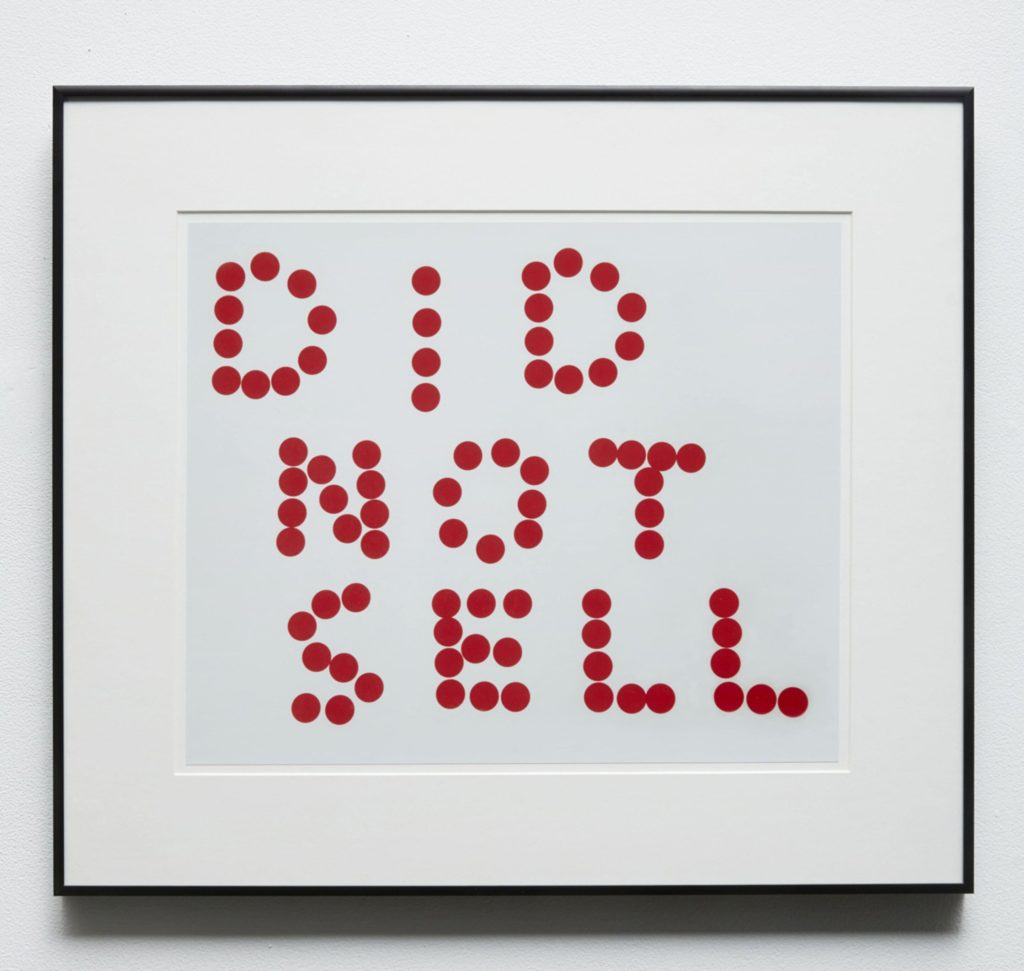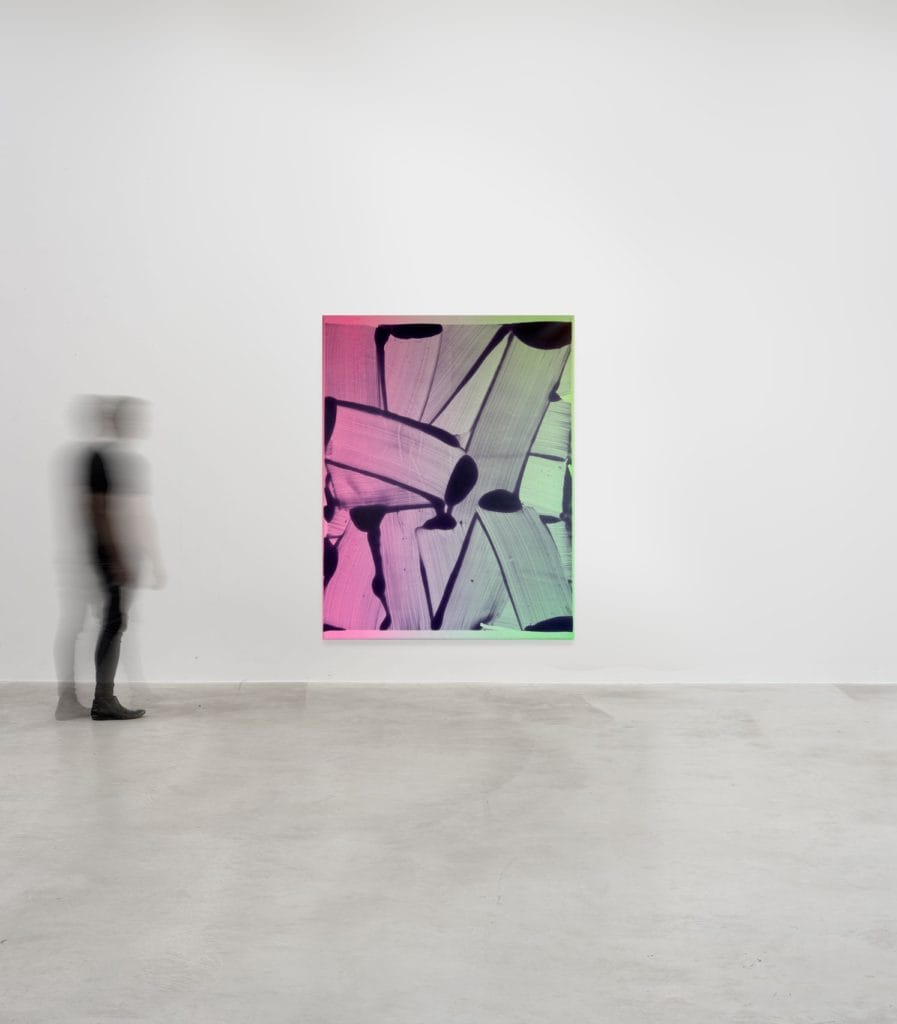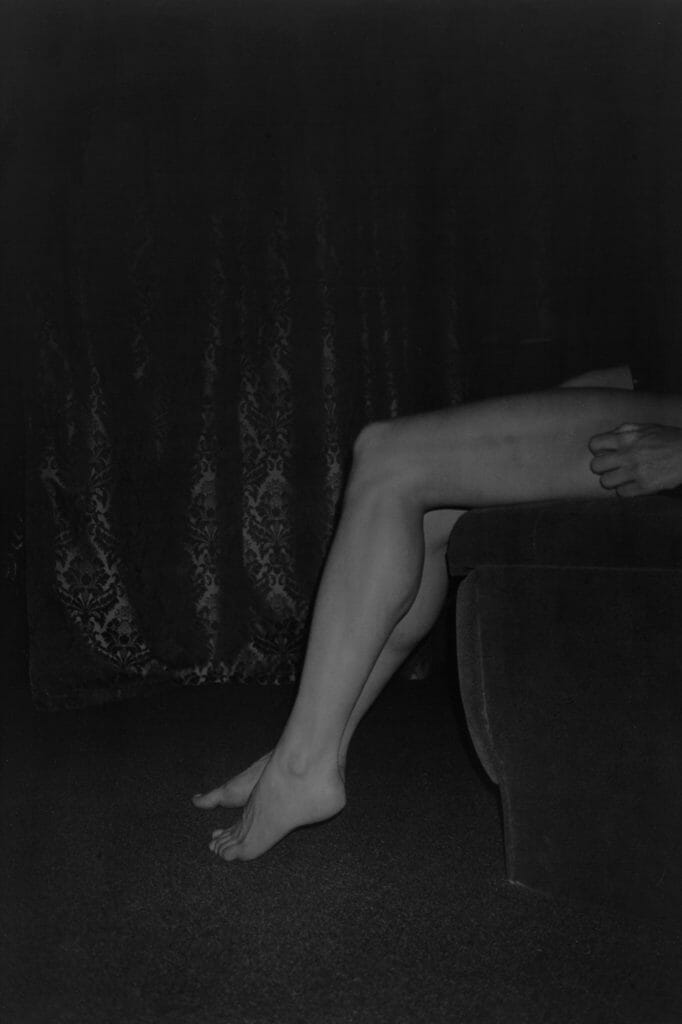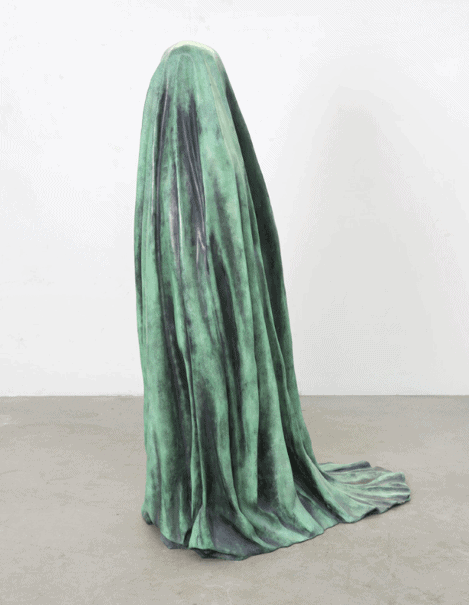
Nikola Vudrag at “Personal Structures — Beyond Boundaries”
Palazzo Mora, Venice, IT
In this article, we are pleased to present the formulas that will result in prices that conform to the art market. These formulas are widely used in the art world or will result in prices corresponding to your works’ actual market value. We have provided different formulas for the different artistic disciplines, from the two-dimensional to the three-dimensional, encompassing painting, works on paper, sculpture, installation, fine art photography, and limited edition prints. We also briefly expand on less collectible art forms such as performance and video art. Throughout this article, we will refer to our price calculator which is a most useful tool to avoid making any mistakes when pricing your art.
The price of an artwork is determined by (i) the artistic discipline and thus the materials in use; (ii) if the artwork is unique or part of an edition; (iii) the size of the artwork; (iv) and arguably most importantly—as we have discussed in our extensive article on the value of art—the resume, relevance, or art historical importance of the artist in question. The latter will determine the natural demand for the artwork, the artistic value it has beyond its decorative function, and the possible return on investment. These factors will be taken into account when calculating the price of your artwork. But first, let’s discuss the most common issues when pricing your art. They could sound very familiar, and it is crucial to know and understand the truth about these issues first.
Artists are constantly torn between two thoughts: being too cheap and not being taken seriously, and being too expensive and not making any sales. Some people argue that pricing your art very high will make you appear very successful and result in more sales; however, if you do not have the resume, the representation, and the art to match those prices, it will never work. So please do not believe the false promises some advisers or YouTube Gurus are making to make you rich quickly; it will not work. Raising your prices is easy, but dropping them is much more complicated and harmful to your credibility and career.
On the other hand, when artists start to get desperate for sales, they drop their prices, looking to make rent or buy new materials. However, this devalues your art, might upset collectors who have purchased your art in the past at higher prices, and will also reduce your credibility in the high-end art world and for gallery representation as there are no profit margins left to work with you with those prices.
If you are not making any sales, it is not necessarily because your prices are too high. There are countless artworks for sale on the likes of Saatchi or Fine Art America with asking prices equaling the costs of the materials, and they are still not selling their work. The art world is oversaturated, and for now, there is no actual demand for your works—and that is perfectly normal. So don’t do discounts or drastic drops. It is crucial to have steady prices and achieve an upward trajectory over time.
There are several pricing systems artists use or are advised to use that might sound like they sense at first, but in the art market, they are not being used that much or at all—and for a good reason. The first common pricing system to avoid is using the sum of material costs + working hours or simply multiplying the material costs depending on their experience. Whereas this approach might sound fair and is very common in other professions, the material costs or hours spent on creating artwork are, in fact, somewhat irrelevant metrics. Some artists can do a lot with limited materials or in limited hours but can create compelling art with a great demand for it or is historically relevant.
A second common approach is the square-inch formula. Perhaps this is one of the better options and is sometimes used in the art world, as it can provide consistent and objective pricing. In this case, you calculate the number of square inches by multiplying the width of the picture by the height and multiplying it by the price per square inch, which is determined by the artist’s career. However, the problem with this approach is that small paintings will be very inexpensive, and large paintings are very expensive. Therefore, the size of the picture is becoming more important than the quality of the picture or the reputation of the artist. This would mean that a small picture by an established artist with a high price per square inch would be lower than the price for a big picture by an unknown artist—which does not make any sense from an art market perspective.
Another common pricing system that is often recommended is to price the picture whatever it is worth to you. This emotional approach to pricing might sound justifiable, but it is tremendously problematic. Your emotions towards your art are important in how you see your oeuvre or individual pieces. You’re allowed to have favorites or others you like a bit less. However, when your art becomes available, you must let go of these sentiments because the market and a piece’s personal or public appreciation are two separate things. Don’t price works you want to get rid of lower. Otherwise, it will devalue your entire oeuvre and don’t overprice paintings you want to keep because it will hold you back from developing a steady selling history.
The latter would also result in inconsistent pricing, which is another important aspect to avoid when pricing your art. Many artists think or are advised to approach their pricing as something fluid—something we can change at all times depending on the situation. Some artists would set a high asking price when the inquiring collector is wealthy and simultaneously offer the same piece for a fraction of that asking price to a collector with a limited budget. Some will double their prices when working with a gallery to side-step the 50% commission the gallery takes to then sell the very same works at half of the price in their studio.
You need to realize that juggling your prices is dangerous from an art market perspective and form an ethical perspective regarding respectful business behavior and best practices to foster long-term collaborations with collectors and dealers. If you use discounts or have large drops in your prices, this will always devalue your work. Good luck selling a piece at $4,000 at a gallery if collectors see that a similar piece is available on your webshop at half the price. This will negatively affect the show and, thus, a potential ongoing collaboration with the gallery. The same applies to those so-called studio sales when artists offer large discounts “need to make room” in their studio. How would you feel as a collector who paid the regular price to see your works are now being offered at a fraction of what they paid? Not only will they avoid buying a second time from you, but the piece they paid X amount of dollars for is all of a sudden worth a lot less due to your inconsistent pricing.

The value of your art does not change when you urgently need money or need to make room in your studio. The value of your art is not something fluid and elusive; it is something real, fixed, and determined by the art market itself. Make sure your prices align with the market and pursue a steady value, preferably with an upward trend in the long run. Our upcoming chapters explain how to price your art following the market standards. In the meantime, if you are still trying to figure out what to do with your prices when working with a gallery, make sure to read our article on gallery collaborations next.
When pricing two-dimensional art—from paintings, drawings, and fine art photography to prints—the best way to get your prices right is by using a widely-used formula based on the artwork size and the artist’s career.
(Height + Width) x Index number = Price
Whereas the square-inch formula had a linear price curve, increasing along with the size of the surface, this formula will value smaller paintings higher and bigger paintings lower, resulting in a price range that is perfectly in line with the actual market value of the artwork. As a result, the index number becomes the most important aspect in finding the proper price range. The index number should change depending on the artistic discipline and the artist’s career. When it comes to the artist’s career, here are the four different categories we’ll be using to refer to the level of the artist when deciding the index number.
(i) Hobby artist: You just started as an artist and are exploring your medium in your first months or years. Your style and technique are still in progress, and you haven’t exhibited your work yet. For now, art is just a hobby, and the value of your work will be slightly above the sum of your material costs.
(ii) Amateur artist: Art has become more than a hobby as you create regularly and have exhibited at some low-value venues—think of having an open studio day or an exhibition at a local library, bar, or art supply store. However, you haven’t had any exhibitions yet at venues that are part of the art world (art galleries and museum institutions). Therefore, you have little to no reputation or artistic value beyond the decorative value of your works, resulting in a price range of $200 up to $2,000 dollars.
(iii) New emerging artist: You have been able to enter the art world and are exhibiting at your first few small art galleries. Therefore, you start to see some sales by art collectors, and perhaps you have been selected for an entry-level art award or residency. Your works start to have true artistic value, resulting in a price range of $500 up to $5,000.
(iv) Advanced emerging artist: You have solidified your presence in the art world, exhibiting frequently at small to medium-sized art galleries. You have had at least five group shows and one solo exhibition at high-value galleries. You have a steady selling history with a decent collector’s base following and acquiring your work as a validation from the art market. You have had art world validation through at least one institutional exhibition or an individual honor. The price spectrum for advanced emerging artists is between $1,000 and $10,000.
If you surpass the level of being an advanced emerging artist and become a mid-career artist—marked by multiple institutional exhibitions, high demand for your work, prestigious gallery representation, and some secondary market activity—you will no longer have to figure out your pricing yourself. Instead, you will have a gallery to support and guide you. Make sure this gallery has experience supporting other mid-career and preferably also established artists. If you are the highest-rated artist from their portfolio, feel free to explore new horizons and use the demand for your work and your resume as leverage to land better representation.
Having discussed the artist’s career levels, it is time to illustrate what this means for the index number and, thus, the price or value of your art. Depending on the artistic discipline, the index number will vary. Therefore, we will guide you from discipline to discipline. To avoid making any mistakes, to save some time making the calculations, or to efficiently revisit your prices, feel free to consider purchasing our online price calculator, which includes additional instructions on how to set the right index number.
Paintings are, historically speaking, one of the most superior art forms in terms of market value. From the two-dimensional art forms, painting sits at the very top. A painting is always a unique work of art, and the material attributes of a painting make it feel more valuable and bigger than, for instance, a drawing. As a result, the index numbers will be the highest. Select your index number based on your level and career as an artist.
Model 1: Dimensions in centimeters and price in Euro
Hobby artist → Index number between 6 and 10
Amateur artist → Index number between 10 and 14
New emerging artist → Index number between 14 and 18
Advanced emerging artist → Index number between 18 and 24
Model 2: Dimensions in inches and price in US dollars
Hobby artist → Index number between 16 and 28
Amateur artist → Index number between 28 and 40
New emerging artist → Index number between 40 and 50
Advanced emerging artist → Index number between 50 and 67
If your art requires unconventional materials that are very expensive, or the process is highly time-consuming, hence a low production rate, you can shift your index to the higher end of your index spectrum. If you produce art with a normal amount of materials and can produce a lot of art yearly, you can set your index number slightly lower in your spectrum. Please note that with abstract artists, the size is arguably more important for the price in comparison with figurative painters. If you feel like your art is very minimal and the impact of your work strongly depends on the size of your painting, feel free to use a lower index number for the smaller works and a higher index number for the larger works. These are exactly the questions that our CAI Price Calculator asks in our tool to find your personalized index number.
Now calculate the price of your painting using the formula (Height + Width) x Index number = Price. Let’s illustrate with a couple of examples.

E.g. 1, 50 centimeters in height + 40 centimeters in width makes 90. Multiplied with an index of 18 as a new emerging artist with a low production rate makes a price of €1,620. Feel free to round up—or down—to have a more convenient number. In this case, we’ll round down to €1,600.
E.g. 2, A rather large painting of 72 inches in height and 48 inches in width makes a sum of 120. The advanced emerging artist has a regular production rate and creative process, resulting in an index number of 60. As a result, the painting is priced at $7,200.
Works on paper or drawings are traditionally seen as slightly less valuable than paintings due to being on paper instead of on canvas—which is somewhat cheaper, comes most often in smaller sizes, and is, therefore, arguably more convenient to work with. However, as mentioned earlier in this article, the material costs must always be inferior to the artistic creation. Too often, artists price their work on paper for a fraction of what their paintings cost. By doing so, you’re stating that the value comes from the material, not the artistic creation. I strongly advise against this and even advocate trying to value your works on paper as expensive as your paintings. You can achieve this by making sure the presentation of the drawing is as good as it gets or even physically elevating its presence to be on even terms with a painting, for instance, by mounting the paper on a panel or providing a large and high-end artist frame to blur the distinction with painting (see image below).
However, historically speaking and in today’s art market, works on paper are less expensive than paintings—despite their presentation. As a result, the process is exactly the same as with paintings but with slightly lower index numbers. Select your index number based on your career level, and move up or down in your index spectrum based on the presentation of your work on paper, the used materials, and the production rate. A more physical presentation, expensive materials, and a time-consuming process will, therefore, result in a higher index number. Once more, when it comes to these questions, the CAI Price Calculator will assist you to find your correct and personal index number. Select your index number and use (Height + Width) x Index number to determine your price.
Model 1: Dimensions in centimeters and price in Euro
Hobby artist → Index number between 4 and 8
Amateur artist → Index number between 8 and 12
New emerging artist → Index number between 12 and 16
Advanced emerging artist → Index number between 16 and 20
Model 2: Dimensions in inches and price in US dollars
Hobby artist → Index number between 11 and 22
Amateur artist → Index number between 22 and 33
New emerging artist → Index number between 33 and 44
Advanced emerging artist → Index number between 44 and 56

E.g. 1, An amateur artist has a work on paper measuring 40 x 30 centimeters, making a total sum of 70. As the paper is mounted on a thick wooden panel inside a floating frame with a normal creative process and material attributes, the index is set at 11, resulting in a price of €770. The artist opts to list the artwork at €750.
E.g. 2, A new emerging artist has a medium-sized artwork on paper measuring 25 by 25 inches. The drawing consists of regular pastels and is presented in a normal wooden frame without passe-partout, resulting in an index of 33. Therefore, the price of the drawing is $1,650.
Moving on to fine art photography, we encounter a similar approach, but again with slightly lower index numbers, as a fine art photograph is most often presented in a numbered and signed edition, and therefore, we’re no longer dealing with unique objects. Select your index number based on your career level and apply the same formula once more: (Height + Width) x Index number = Price.
If the edition is unlimited or very large, for example, an edition of 50, the price will be much lower, and you should opt for the lower end of your index spectrum. A standard edition—what I would advise or argue to be ideal—consists of 4 up to 12 and one or two APs. Here, the index number should be in the middle of your index spectrum. However, some photographers print their work just once as a unique piece—and some might even do some post-processing, dissolving the distinction between a print and a unique handcrafted picture. In this case, you can opt for the higher end of your index spectrum.
Please note that besides the edition of the photograph, as with the works on paper, the presentation or framing of the photograph is also crucial. If you go for a high-end presentation, the index number can increase. If you present the photograph unframed, the index number will go down. By doing so, fine art photographs can achieve a similar value as paintings and works on paper. The price calculator tool will ask the right questions here to find the appropriate index number within your range.
Model 1: Dimensions in centimeters and price in Euro
Hobby artist → Index number between 1 and 4
Amateur artist → Index number between 4 and 8
New emerging artist → Index number between 8 and 14
Advanced emerging artist → Index number between 14 and 20
Model 2: Dimensions in inches and price in US dollars
Hobby artist → Index number between 3 and 11
Amateur artist → Index number between 11 and 22
New emerging artist → Index number between 22 and 40
Advanced emerging artist → Index number between 40 and 56

E.g. 1, A hobby artist has printed an edition of 50 of her first fine art photographs, and they are presented unframed. The dimensions are 60 centimeters in height and 50 centimeters in width. The total of 110 and an index number of 1 results in an asking price of €110 per photograph.
E.g. 2, An advanced emerging artist prints their photographs onto linen as unique pieces and edits them with chemicals to increase the materiality of the print and to accentuate the highlights of the pictures. By doing so, a monumental photo print of 60 inches high and 100 inches wide is priced at $9,000 due to an index number of 56 and rounding up to an even number.
To conclude the pricing of two-dimensional artworks, we still have to discuss prints of unique artworks—for instance, of a painting that is rather pricey, and you would like to offer a more affordable version. As with photography prints, depending on the size of the edition, the index should be higher when the edition is very limited, and lower when it is rather large. However, with fine art photography, the print is the finished product. With fine art prints, the print is a by-product of a finished product. Therefore, the index ranges are once more lower:
Model 1: Dimensions in centimeters and price in Euro
Hobby artist → Index number between 0.5 and 1
Amateur artist → Index number between 1 and 2
New emerging artist → Index number between 2 and 3
Advanced emerging artist → Index number between 3 and 5
Model 2: Dimensions in inches and price in US dollars
Hobby artist → Index number between 1 and 2.5
Amateur artist → Index number between 2.5 and 5
New emerging artist → Index number between 5 and 8
Advanced emerging artist → Index number between 8 and 14

E.g. 1, An amateur artist with a tremendous amount of followers on Instagram is finding it difficult to sell originals to those followers due to the high price point of painting. Therefore, the artist opts to create a reproduction of a painting that went viral, printing it on paper, 70 cm in height by 50 cm in width, in an edition of 50, selling it unframed. Therefore, the index number is set at 3, resulting in an asking price of €360 for the signed art print.
E.g. 2, A new emerging artist is having a solo exhibition at a gallery. On the occasion of this show, the artist and gallery decide to offer a print—including a frame in an edition of 12—to satisfy buyers who would like to collect something that is not too pricey. Measuring 40 x 28 inches, the index number is set at 7, resulting in a retail price of $500 (adding up from €476).
Pricing three-dimensional art is a lot trickier due to the diverse material costs depending on the technique, the potential outsourcing of various parts of the production process—or all of it—to external companies, the use of ready-mades, and the sheer variety of sizes, disciplines, purposes, and value attached to three-dimensional art. As a result, it is hard to find a one-size-fits-all formula. However, there are some recurring best practices in the art world and clear differences between pricing sculpture, public sculpture, and installation art.
However, there is a formula that can be applied to all artists that will result in a price range following both the market standard and naturally adapting to the costs when working with different materials;
(Height + Width + Depth) x Index number + Production costs = Price
The sum of the three dimensions is multiplied by the index number determined by the level of the artist’s career. In addition, the production costs are added to the total price. Please note that we use the sum of the dimensions and not the total volume of the three-dimensional artwork, as the volume is not always the same as the multiplying height, width, and depth, depending on the form and shape of the sculpture—think of thin and high sculpture with a broad base at the bottom. If you use a different pricing model but your prices are within the price ranges of this formula, then your pricing model is working just fine.
Especially when working with more expensive materials such as bronze or marble, it is crucial to include the production costs in the price of your artwork. Especially with more monumental works, it is very common that these production costs are used separately beside the artistic value of the artwork (embodied by the sum of the height, width, and depth, multiplied by the index number). For instance, when a gallery co-invests in the production of such as piece.
Now, let’s discuss the index number ranges. Please note you should push up your index number if the process is very time-consuming, has a high investment in terms of production costs, has a low production rate, or has a lot of volume of sculpture within the three dimensions. If you have a high production rate, the investments are rather low when it comes to the production costs, or your works have very little mass or volume within the three dimensions, you should opt to go for the lower end of your index range. As with our two-dimensional pricing models, the price calculator tool will assist you in finding the exact index number within your range.
Model 1: Dimensions in centimeters and price in Euro
Hobby artist → Index number between 2 and 4
Amateur artist → Index number between 4 and 10
New emerging artist → Index number between 10 and 18
Advanced emerging artist → Index number between 18 and 24Model 2: Dimensions in inches and price in US dollars
Hobby artist → Index number between 5 and 11
Amateur artist → Index number between 11 and 28
New emerging artist → Index number between 28 and 50
Advanced emerging artist → Index number between 50 and 67

E.g. 1, You are an amateur artist creating small clay sculptures, measuring 50 x 40 x 30 centimeters. You can produce them swiftly, and the production costs are limited to just €50 per piece. The volume of the sculpture within the three dimension is normal, resulting in an index number of 5. As a result, the asking price is €650—(50 + 40 + 30) x 5 + 50.
E.g. 2, You are a new emerging artist creating a monumental plastic 3D-printed sculptures measuring 170 centimeters high, a base width and depth of 100 centimeters. The productions rate is high, but the production costs are high as well as it costs €1,600 to print the piece. The volume within the three dimensions is rather low, due to the pyramid structure of the piece. As a result, the index is set at 13, resulting in an asking price of €6,410—(170 + 100 + 100 cm) x 13 + 1,600), rounded up to €6,500 for the piece in question.
When it comes to public sculpture, most often, there is an open call, or the patron requires a clear project proposal when it comes to the pricing. In this case, we’re not creating art for the free, primary market; we’re creating art on a commission basis for a specific client, place, and purpose.
As a result, the pricing follows the guidelines of the open call, most often requesting a complete budget overview instead of a single price. In this overview, the artist must transparently list all the costs, material, time, and work going into the public artwork to justify the funding. By doing so, the artist receives a part of the funding—or the entire budget—in advance.
The artistic value that used to be calculated based on the aforementioned formula of the sum of the three dimensions multiplied by the index number that we add to the sum of production costs as formulated in the budget overview is now often referred to or written down in working hours or a single honorarium fee. From an artistic point of view, I would advise you to use the latter and calculate it once more based on the formula mentioned above.
Public art will only be accepted from new emerging artists up to advanced emerging artists. Therefore, the following index ranges are applicable to calculate your honorarium. If you are a mid-career artist with high-end representation, you should always discuss these projects with your gallery first.
Model 1: Dimensions in centimeters and price in Euro
New emerging artist → Index number between 10 and 18
Advanced emerging artist → Index number between 18 and 24Model 2: Dimensions in inches and price in US dollars
New emerging artist → Index number between 28 and 50
Advanced emerging artist → Index number between 50 and 67

E.g., You are a new emerging artist who is about to install a first public artwork. A large bronze sculpture of 2 meters high and wide and 50 centimeters deep—a variation of one of your characteristic ceramic sculptures. Your budget overview looks like this:
Preparatory work project proposal: €300
Consultation with an urban planner: €400
Materials to model the sculpture: €250
Bronze foundry: €9,000
Transportation & installment: €1,500
Artist honorarium: €6,500
Total: €16,450
In the case of installation art, we encounter both the pricing models used for standard sculptures using the formula of the sum of height, width, and depth multiplied by the index number, and adding the production costs, and—especially in the case of site-specific or project-based installation artworks—of public art via a transparent budget overview including all the production costs and an honorarium for the artist. Installation art is, of course, less convenient for commercial purposes.
If the artwork is made for the free, primary market, an artist should use the first methodology (see “How To Price Sculpture”). In the case of, for instance, an institutional exhibition or art event with an open call, one should use the latter. The pricing model for both the honorarium and the artistic value of the artwork follows the same principle and index ratios:
Model 1: Dimensions in centimeters and price in Euro
Hobby artist → Index number between 1 and 2
Amateur artist → Index number between 2 and 4
New emerging artist → Index number between 4 and 8
Advanced emerging artist → Index number between 8 and 12Model 2: Dimensions in inches and price in US dollars
Hobby artist → Index number between 3 and 6
Amateur artist → Index number between 6 and 11
New emerging artist → Index number between 11 and 22
Advanced emerging artist → Index number between 22 and 33
Please note that, as with sculptures, when there is not that much volume within the dimensions of your installation, you should opt for a lower index within your range. For instance, if the installation consists of three small blocks positioned 200 centimeters apart, the price would be too high if we multiplied the sum of the total distance by your index number. Instead, you could try to use a lower index number or develop your sum based on the separate blocks of the volume of which the artwork is created. Make sure to sell your installation with clear instructions and a certificate of authenticity that the client owns the rights to the piece and that it is allowed to reconstruct it with the received materials. In the case of vulnerable pieces, it is also common to add some spare parts.

E.g., As an amateur artist preparing your first self-hosted exhibition, you created an installation in the middle of the space, spreading twenty wooden blocks across the floor. The entire surface the installation covers is around 16 square meters (4 meters wide, 4 meters deep, 20 centimeters high). However, as the twenty blocks measure 20 x 20 x 20 centimeters, we opt to multiply the dimensions of 60 by 20 blocks without space in between, making 420, which will be our number to multiply with our index number of 3—instead of 820. This results in an artistic value of €1.260, combined with the material costs of €240, we have an asking price of €1,500.
When we enter the realms of ephemeral art, it becomes incredibly difficult to sell or price art when there is no collectible object—only an idea, execution, or new-media files. Nevertheless, there is a—still very nascent—art market for ephemeral artworks, especially in an institutional and project- or event-based context. Therefore, we are briefly going to discuss the case of pricing for Performance Art, Video Art, and Artistic Interventions.
Pricing and selling the actual performance is rare and challenging. Most often, it is more convenient to make the almost uncollectible collectible instead of trying to sell the almost uncollectible. For performance art, documenting the performance and selling those byproducts are the most convenient and successful ways to sell your performance. In this case, you should use the pricing model of our fine art photography prints (see “How To Price Fine Art Photography”).

Other options include selling bits and pieces of your preparatory work for the performance—for instance, sketches of the choreography or costumes of a performance or the sketches of and plans of the artistic intervention. Video art and video installation are also options to make a performance or public intervention collectible, but this is something we also have to discuss in this section of ephemeral pieces, as the video itself is not an object but a new-media file. For video works, once more, fine art photography prints are a great way to provide collectible objects—printing some film stills in a limited edition.
It does happen, however, that the actual performance is sold or commissioned to be performed or when the rights of the video or public intervention are being sold. In these cases, as with public art (cf. supra), we’re not creating art for the free, primary market; we’re creating art on a commission basis for a specific client, place, and purpose. Therefore, once more, we must construct a price based on either the guidelines of the open call that was formulated for this performance, suggesting a specific honorarium for the artist, or we must present a complete budget overview instead, transparently listing all the costs of people that need to be hired to execute the performance, the costumes, travel, food, and accommodation of the staff, and the honorarium for the artistic input of the artist, or their time.
As we do not have any dimensions with this ephemeral piece, I would advise you to select an honorarium or artistic value within the following price ranges;
Hobby artist → An artistic value or honorarium should be set between €50 and €250.
Amateur artist → An artistic value or honorarium should be set between €250 and €1,000.
New emerging artist → An artistic value or honorarium should be set between €1,000 and €5,000.
Advanced emerging artist →An artistic value or honorarium should be set between €2,000 and €10,000.
You can add your costs from the budgeting, if necessary, to these artistic values as instructed with Installation Art and Public Art.
To solve the pricing issues our audience faces, we have developed the CAI Price Calculator: an easy-to-use Excel spreadsheet to calculate your price following the market standards for paintings, works on paper, fine art photography prints, art prints as reproductions, and sculptures. By doing so, you will avoid setting your prices too low or too high. You can raise your prices in bulk by changing just a single index number, and it asks crucial questions about the different subtle aspects that affect the value of your artistic discipline and, thus, the index number.
As always, we provide these art career tools at the most modest—almost symbolic—price. Feel free to discover the CAI Price Calculator here.
Last Updated on May 2, 2024

Palazzo Mora, Venice, IT

The Controversial Truth